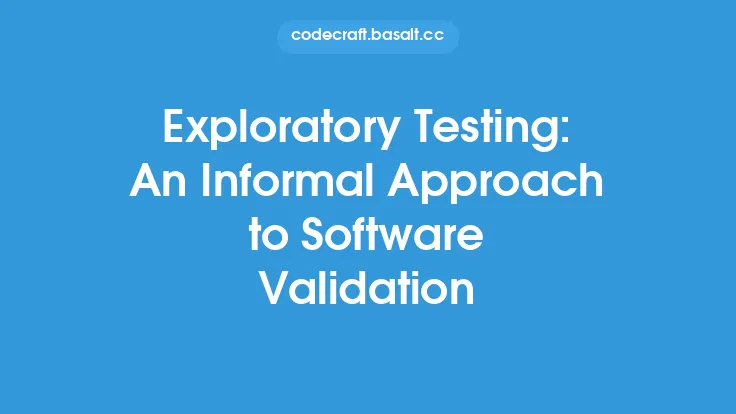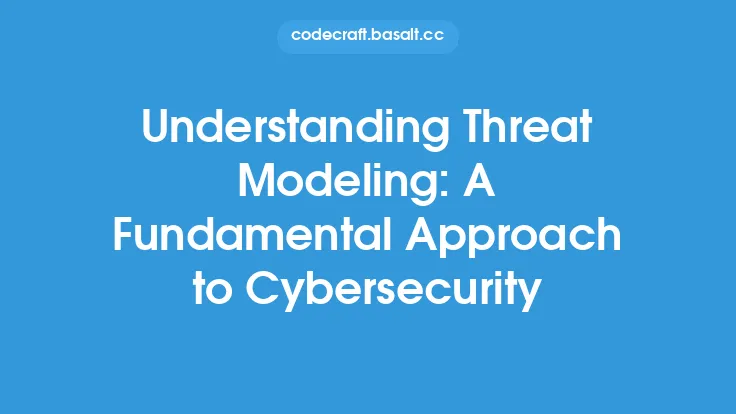Error guessing is a heuristic approach used in software testing to identify test cases that are likely to reveal defects or errors in the software. This approach relies on the tester's experience, intuition, and knowledge of the software to guess where errors are most likely to occur. Error guessing is often used in conjunction with other testing techniques, such as equivalence partitioning and boundary value analysis, to create a comprehensive set of test cases.
Introduction to Error Guessing
Error guessing is a non-systematic approach to test case identification, meaning that it does not involve a formal or structured methodology. Instead, testers use their knowledge of the software, its requirements, and its potential weaknesses to identify areas where errors are likely to occur. This approach is often used when there is limited time or resources available for testing, or when the software is complex and difficult to test using more formal methods.
How Error Guessing Works
Error guessing involves a combination of experience, intuition, and analytical skills. Testers use their knowledge of the software to identify potential error-prone areas, such as complex algorithms, interfaces between modules, or areas where the software interacts with external systems. They then use this knowledge to create test cases that are likely to reveal errors or defects in these areas. Error guessing can be applied at various levels of testing, including unit testing, integration testing, and system testing.
Benefits of Error Guessing
Error guessing has several benefits, including:
- Quick identification of errors: Error guessing can help identify errors quickly, especially when time is limited or when the software is complex.
- Cost-effective: Error guessing can be a cost-effective approach to testing, as it does not require a significant amount of time or resources to implement.
- Flexibility: Error guessing can be used in conjunction with other testing techniques, such as equivalence partitioning and boundary value analysis, to create a comprehensive set of test cases.
- Improved test coverage: Error guessing can help improve test coverage by identifying areas of the software that may have been missed by other testing techniques.
Limitations of Error Guessing
While error guessing can be an effective approach to test case identification, it also has several limitations, including:
- Dependence on tester experience: Error guessing relies heavily on the tester's experience and knowledge of the software, which can be a limitation if the tester is inexperienced or lacks knowledge of the software.
- Lack of structure: Error guessing is a non-systematic approach, which can make it difficult to ensure that all areas of the software are adequately tested.
- Risk of missing errors: Error guessing may not identify all errors or defects in the software, especially if the tester is not experienced or knowledgeable about the software.
Best Practices for Error Guessing
To get the most out of error guessing, testers should follow several best practices, including:
- Use a combination of testing techniques: Error guessing should be used in conjunction with other testing techniques, such as equivalence partitioning and boundary value analysis, to create a comprehensive set of test cases.
- Use experience and knowledge: Testers should use their experience and knowledge of the software to identify potential error-prone areas and create test cases that are likely to reveal errors or defects.
- Review and refine test cases: Testers should review and refine their test cases regularly to ensure that they are adequate and effective.
- Use automated testing tools: Automated testing tools can help improve the efficiency and effectiveness of error guessing by allowing testers to run multiple test cases quickly and easily.
Common Error Guessing Techniques
Several techniques can be used to support error guessing, including:
- Error prone area identification: This involves identifying areas of the software that are likely to be error-prone, such as complex algorithms or interfaces between modules.
- Fault injection: This involves intentionally introducing faults or errors into the software to test its behavior and identify potential weaknesses.
- Test case design: This involves designing test cases that are likely to reveal errors or defects in the software, based on the tester's knowledge and experience.
Real-World Applications of Error Guessing
Error guessing has a wide range of real-world applications, including:
- Software development: Error guessing can be used to identify errors and defects in software during the development phase, reducing the risk of errors being introduced into production.
- Maintenance and support: Error guessing can be used to identify errors and defects in software during the maintenance and support phase, reducing downtime and improving overall system reliability.
- Quality assurance: Error guessing can be used to identify errors and defects in software during the quality assurance phase, ensuring that the software meets the required standards and specifications.
Conclusion
Error guessing is a heuristic approach to test case identification that relies on the tester's experience, intuition, and knowledge of the software. While it has several benefits, including quick identification of errors and cost-effectiveness, it also has limitations, such as dependence on tester experience and lack of structure. By following best practices and using a combination of testing techniques, testers can get the most out of error guessing and improve the overall quality and reliability of the software.





